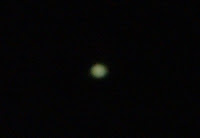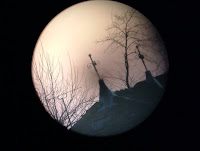 So I thought when I do finally get some decent photos I might want some colour in them, so I have done a trial with false colour images. I have some colour filters for my camera, and took 4 photos of Beetham Tower in Manchester (Our only skyscraper). These images were then converted to black and white (to ensure i didn't accidentally pick up any other colour (the blue was letting a lot of red through too), then colourising them (which is what you see above). Then I aligned the images and mixed them (picking the levels by hand) the image above can be seen as the result (the trees are a bit crappy as they had moved in the wind between replacing the filters. As you can see the result look quite good. I was actually surprised, because I was expecting it not to look real. I imagined that false colour images of space weren't a true representation of colour, but as this test has show, it looks pretty good. (All I need now is to try the same thing with a hyrdogen alpha filter, I don't think the results will somehow be the same) :)
So I thought when I do finally get some decent photos I might want some colour in them, so I have done a trial with false colour images. I have some colour filters for my camera, and took 4 photos of Beetham Tower in Manchester (Our only skyscraper). These images were then converted to black and white (to ensure i didn't accidentally pick up any other colour (the blue was letting a lot of red through too), then colourising them (which is what you see above). Then I aligned the images and mixed them (picking the levels by hand) the image above can be seen as the result (the trees are a bit crappy as they had moved in the wind between replacing the filters. As you can see the result look quite good. I was actually surprised, because I was expecting it not to look real. I imagined that false colour images of space weren't a true representation of colour, but as this test has show, it looks pretty good. (All I need now is to try the same thing with a hyrdogen alpha filter, I don't think the results will somehow be the same) :)Incidentally, I tried swapping some of the colours around. This image is using red on the blue image, blue on the green, green on the yellow and yellow on the red.





